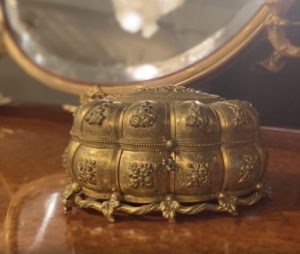Ferdinand Barbedienne
‘Gloria Victis’ , After the Model by Marius-Jean-Antonin Mercié
£36,000
A Patinated Bronze Figural Group of ‘Gloria Victis’ (‘Glory to the Vanquished’), Cast by Ferdinand Barbedienne from the Model by Marius-Jean-Antonin...
Dimensiones
Altura: 106 cm (42 in)Ancho: 42 cm (17 in)
Profundidad: 36 cm (15 in)
Descripción
A Patinated Bronze Figural Group of ‘Gloria Victis’ (‘Glory to the Vanquished’), Cast by Ferdinand Barbedienne from the Model by Marius-Jean-Antonin Mercié (French, 1845-1916).
‘Gloria Victis’ (‘Glory to the Vanquished’).
Bronze, gilt and dark brown patina.
Signed ‘A. Mercié’, with foundry inscription ‘F. BARBEDIENNE, Fondeur. Paris.’ and A. Collas reduction cachet. The integral base titled ‘GLORIA VICTIS’.
This cast is part of a limited edition by the Barbedienne Foundry.
France. Circa 1880.
‘Gloria Victis’ is one of the most recognisable and important works of sculpture of the nineteenth century and a definitive image of France’s historic national identity. The figure of glory, winged and wearing armour, carries a dying young warrior heavenwards towards fame and immortality. The compositional daring of the group must be admired for balancing two figures on the minimal support of one foot, wings spread in the moment before taking flight.
Mercié was a student at the French Academy of Rome when the Prussians invaded France in 1870. Shortly after the war had begun, he executed a group depicting the figure of Fame supporting a victorious soldier. When news reached Mercié in Rome that the French had surrendered, he decided to alter his group, replacing the victorious soldier with a defeated casualty, thus transforming an allegory of ‘Glory to the Victors’ into one of ‘Glory to the Vanquished’. Completed in 1872, a year after the defeat of French soldiers against the Prussian army, the statue personifies a defeated but heroic France. The title is also a reversal of the famous formula, ‘Vae Victis’ (Death to the Vanquished), which the Gallic general Brennus exclaimed upon defeating the Romans in 390 BC. The figure of the fallen soldier was thought to represent Henri Regnault, a fellow sculptor of Mercié who was killed on the last day of fighting.
Measuring 317 cm. high the original group of ‘Gloria Victis’ was unveiled in plaster at the Salon of 1872. It was bought by the City of Paris for the sum of twelve thousand francs and then cast in bronze by Victor Thiébaut for eight thousand five hundred francs. The bronze was exhibited at the Salon in 1875 and first placed in Montholon Square in the 8th arrondissement. In 1884 it was transferred to the courtyard of the Hôtel de Ville and in 1930, it entered the collection of the Musée du Petit Palais, where it can be seen to this day.
The Thiébaut Frères foundry also cast Gloria Victis bronzes for the cities of Niort (requested 1881) Bordeaux (requested 1883), Châlons-sur-Marne (today, Châlons-en-Champagne; requested 1890), and Cholet (requested 1901). In 1905, the Danish brewer and art collector Carl Jacobsen was permitted to have an exact cast made of the original sculpture in Paris, on condition that the base was made 2 cm lower and bore the inscription “Original tilhører Paris By” (The original belongs to the City of Paris). It too was cast by the Thiébaut Frères foundry. Gloria Victis was one of Jacobsen’s most important and his last acquisition. Today it has been returned to its original position in the Winter Garden at Glyptoteket, Copenhagen, Denmark.
The full-size plaster was shown again at the Paris Expositon universelle of 1878 alongside a bronze reduction by Barbedienne. By this time Antonin Mercié had entered into a commercial edition contract with the Ferdinand Babedienne foundry to produce bronze reductions of Gloria Victis, his most famous work. Gloria Victis is first recorded to have been produced in three sizes and by 1886 Barbedienne’s ‘Catalogue des Bronzes D’Art’ lists six sizes measuring 3/5, 9/20, 7/20, 3/10, 6/25 and 2/10, of the original. These reductions were produced by an invention of Barbedienne’s business partner Achille Collas. The Collas reducing machine was a type of complex mechanical pantograph lathe that enabled sculpture to be mathematically measured and transcribed to scale, in the round, thus making a reduced size plaster from which a bronze could be cast.
Mercié’s modern sculpture had become an instant classic, even receiving an entry in the Nouveau Larousse Illustré. The success of the group undoubtedly lay in the fact that it was admired not just on an aesthetic level, but also on a patriotic level, particularly in its commemoration of heroism in defeat. Immediately ‘Gloria Victis’ was recognised as a national artwork, capable of arousing patriotism and casts were ordered from Barbedienne as local memorials commemorating the war’s dead for cities across France. ‘Gloria Victis’ was considered so much a part of France’s national identity that for the 1900 Paris Exhibition, Ferdinand Barbedienne’s nephew Gustave Leblanc, loaned a bronze example to feature as part of l’Exposition centennale de l’art français.
Marius-Jean-Antonin Mercié
Marius-Jean-Antonin Mercié (1845- 1916) was born in Toulouse and studied at the École des Beaux Arts, Paris, under Alexandre Falguière and François Jouffroy, He made his debut at the Salon in 1868 when he won the celebrated Grand Prix de Rome with the group ‘Thesée vainqueur du Minotaure’. This entitled him to study in Rome, and whilst studying in Rome from 1869 to 1873, he already executed the models for his first two popular works, ‘David’ and ‘Gloria Victis’.
In 1870 whilst Mercié was still in Italy, the Prussians invaded France and he began, somewhat prematurely, modelling Gloria Victis to commemorate his country’s imminent victory. Unfortunately the victory never came and Mercié remodelled his sculpture replacing the victorious soldier with one of defeat thereby transforming an allegory of ‘Glory to the Victors’ into one of ‘Glory to the Vanquished’. The model for the wounded soldier was reputably based on his friend and fellow sculptor Henri Regnault who was killed on the last day of the war.
The full-size plaster model of Gloria Victis was exhibited at the Salon of 1874, winning the Medaille d’Honneur and critical acclaim. It was then purchased by the City of Paris for the sum of twelve thousand francs and cast in bronze by Victor Thiébaut for a further eight thousand five hundred francs. The original bronze is now placed in the central courtyard of the Paris Hôtel de Ville. The plaster version was re-exhibited at the Paris Universal Exhibition of 1878, alongside bronze reductions of the group by Barbedienne.
After Mercié completed the plaster model of his David in Rome, it was also sent to Paris and exhibited at the Salon of 1872, where it was a great success, winning a first class medal. A life-size bronze version of the work was then exhibited at the Exposition Universelle of 1878 and acquired by the Museé du Luxembourg.
In 1873 Mercié was given the Cross of the Legion of Honour – an unprecedented award for a sculptor who was still a student at the French Academy in Rome.
In 1882 he enjoyed further great success with a group ‘Quand Même’, replicas of which have been set up at Belfort and in the garden of the Tuileries.
Mercié received many important commissions which included monuments to Jean-Louis-Ernest Meissonier (1895), erected in the Jardin de l’Infante in the Louvre, and Louis Faidherbe (1896) at Lille; a statue of Adolphe Thiers set up at St Germain-en-Laye; the monument to Paul Baudry at Père Lachaise; and that of Louis-Philippe and Queen Amélie for their tomb at Dreux (1885). His stone group of ‘Justice’ is at the Hôtel de Ville, Paris.
Further to this he also received many international commissions including three monuments in America namely – ‘Robert E. Lee’ (1890) an equestrian bronze on Monument Avenue in Richmond, Virginia; a collaboration with his former teacher Alexandre Falguière on the ‘Marquis de Lafayette’ (1891) in the District of Columbia and for the Francis Scott Key Monument, Baltimore, Maryland in (1911).
Mercié was appointed Professor of Drawing and Sculpture at the École des Beaux Arts, and was elected a member of the Académie Française in 1891, after being awarded the biennial prize of the Institute of 800 in 1887.
He was also one of the few sculptors to be elected to grand officer of the Légion d’Honneur, and in 1913 became the president of the Société des Artistes Français.
As Harpers Magazine was to put it in an article of 1888, on modern French sculpture, Mercié’s genius was characterised by an intensity of feeling and an unerring sentiment of beauty in form.
‘M. Mercié is a man who lives outside of contemporary life, reading neither books nor newspapers, taking no part in civic or patriotic business, frequenting but rarely the society of a few friends, and being, in fact, a sort of artistic hermit isolated in the studio. And yet M. Mercié at the opportune moment created that famous group Gloria Victis, which symbolized with thrilling intensity the moral state of patriotic France in 1874, vanquished, but conscious of heroic deeds and noble resolves, grateful to her fallen sons, and more glorious in her defeat than was the Teuton foe in his brutal victory. But how did M. Mercié conceive this group? Why did the clay assume this form? How came the sculptor to express so vividly the latent thought of a whole nation? The simple fact is that the clay which became ultimately the model of Gloria Victis assumed successively the forms of Samson and Delilah and Judith and Holofernes, but being satisfied with neither of these projects, M. Mercié transformed the clay into the group which is called Gloria Victis, and which was conceived and modelled in ten days.’
Bibliography
Pierre Kjellberg, ‘Les Bronzes du XIX Siecle, dictionnaire des sculpteurs’, Edition de l’Amateur, (Paris) 1987, pps 488-491.
Lami, Vol 3, p. 433; Romantics to Rodin, pp. 304-6.
‘Contemporary French Sculptors’: The Century, Volume 33, Issue 3, Jan 1887
‘Modern French Sculpture’: Harper’s new monthly magazine, Volume 76, Issue 452,
January 1888.
Fecha
Alrededor de 1880
Origen
Francia
Medio
Bronce patinado
Firma
signed 'A. Mercié', with foundry inscription 'F. BARBEDIENNE, Fondeur. Paris.'
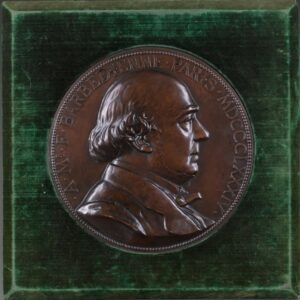
Ferdinand Barbedienne (6 de agosto de 1810 - 21 de marzo de 1892) fue un metalúrgico y fabricante francés, muy conocido como fundidor de bronce.
Hijo de un pequeño agricultor de Calvados, comenzó su carrera como comerciante de papel pintado en París. En 1838 se asoció con Achille Collas (1795-1859), que acababa de inventar una máquina para crear réplicas en bronce de estatuas en miniatura. Juntos iniciaron un negocio de venta de miniaturas de estatuas antiguas procedentes de museos de toda Europa, democratizando así el arte y haciéndolo más accesible a los hogares. A partir de 1843 ampliaron su campo de acción reproduciendo la obra de artistas vivos y también se diversificaron fabricando objetos domésticos esmaltados. Con el estallido de la guerra franco-prusiana en 1870, la empresa tuvo que dedicarse brevemente a la fundición de cañones debido a la escasez de metales, pero reanudó su actividad posteriormente. Tras la muerte de Barbedienne en 1892, fue enterrado en el cementerio del Père-Lachaise y la empresa fue continuada por su sobrino Gustave Leblanc hasta 1952.
Entre los principales artistas reproducidos por la firma estaban Antoine Louis Barye y Auguste Rodin.
For an interesting account of the process of creating a reduction in bronze of the Gloria Victis by Barbedienne and illustrations of the casting and finishing of the bronze see:
‘Ferdinand Barbedienne’: Theodore Child; Harper’s new monthly magazine, Volume 73, Issue 436, September 1886.
‘Contemporary French Sculptors’: The Century, Volume 33, Issue 3, Jan 1887.
‘Modern French Sculpture’: Harper’s new monthly magazine, Volume 76, Issue 452,
January 1888.
S, Lami, ‘Dictionnaire des sculpteurs de l’Ecole française au dix-neuvième siècle’, Tome III. G.-M., Paris, 1914, p. 432.
Peter Fusco and H.W. Janson, The Romantics to Rodin: French Nineteenth Century Sculpture from North American Collections, Los Angeles, 1980, p. 304-306.
Spring Exhibition Catalogue, Shepherd Gallery Associates, New York, 1985, p. 154.
H. Vollmer, Allgemeines Lexikon der Bildenden Künstler von der Antike bis zur Gegenwart, Leipzig, 1986, vol. XXIV, p. 408.
Pierre Kjellberg, ‘Les Bronzes du XIXe Siècle’, Paris, 1989, p. 489.
Sculpture: An Illustrated Catalogue, National Gallery of Art, Washington, 1994, no. 149.
Ed. J. Turner, The Dictionary of Art, Macmillan Publishers Limited, London, 1996, p. 147.
E. Bénézit, Dictionnaire critique et documentaire des peintres, sculpteurs, dessinateurs et graveurs, Paris, 1999, vol. IX, p. 499.
Gloria victis! : [victors and vanquished in French art 1848-1910], Catalog of an exhibition held at the Ny Carlsberg glyptotek, Copenhagen, Denmark, May 29-Oct. 15, 2000, Milan, 2001 p. 66.
N. Parkinson, ‘Work of Art, Museum Trophy, Memorial Monument: The Ny Carlsberg Glyptotek’s Gloria Victis by Antonin Mercié’, Nineteenth-Century Art Worldwide, Volume 21, Issue 3, Autumn 2022.
TAMBIÉN TE PUEDE GUSTAR
-
£55,000 Añadir a la cesta
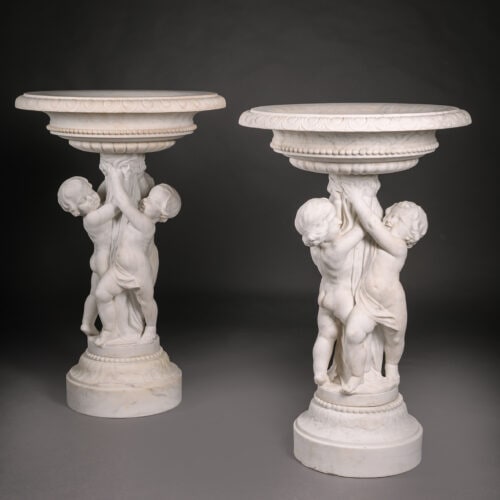
A Pair of White Statuary Marble Garden Planters
-
£85,000 Añadir a la cesta
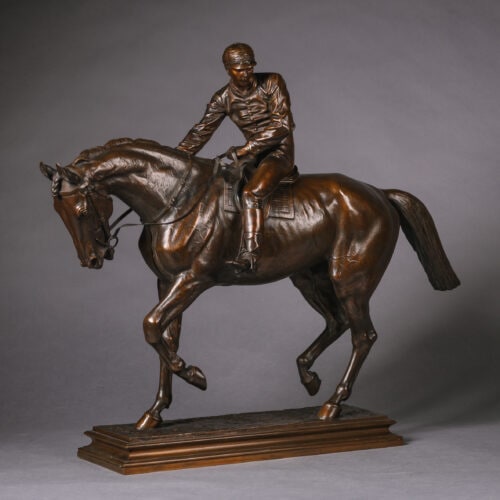
Isidore-Jules Bonheur (French,1827-1901)
Isidore Jules Bonheur (FRANCÉS, 1827-1901) 'Le Grand Jockey '
-
POA Read more
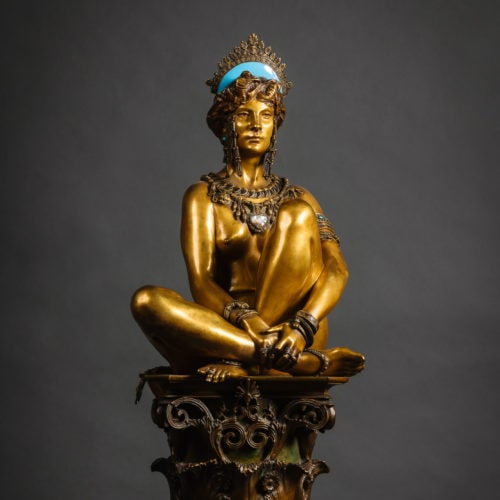
Jean-Léon Gérôme (French,1824 – 1904)
Jean-Léon Gérôme (1824-1904), Corinto, bronce dorado
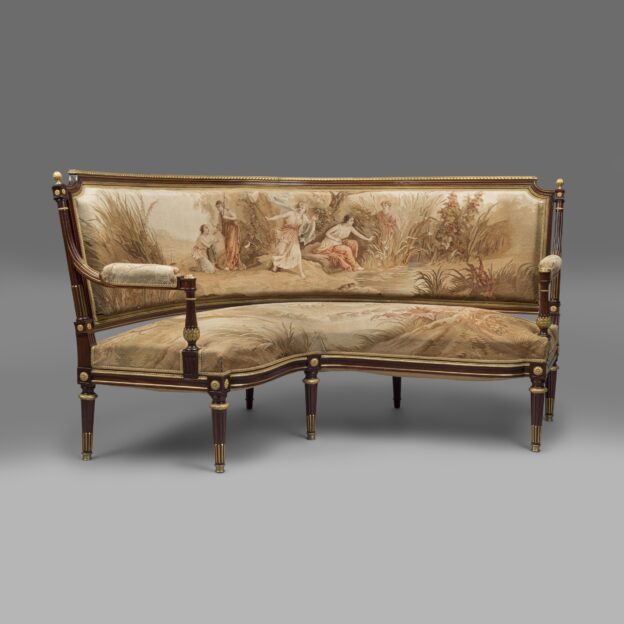




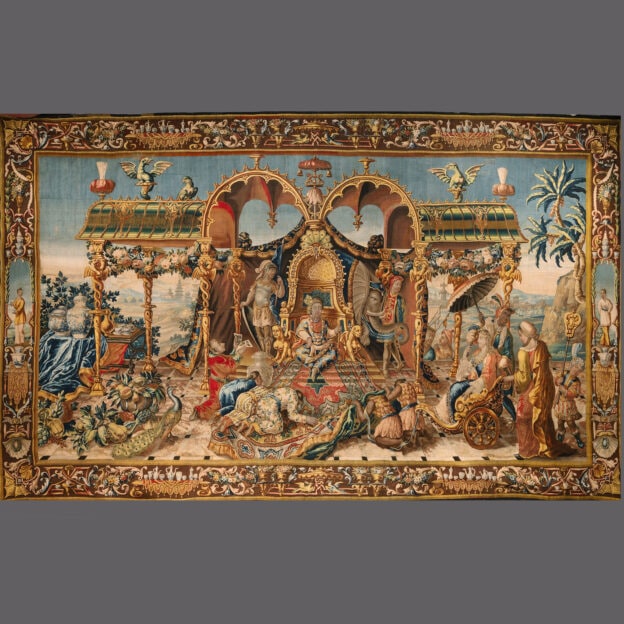
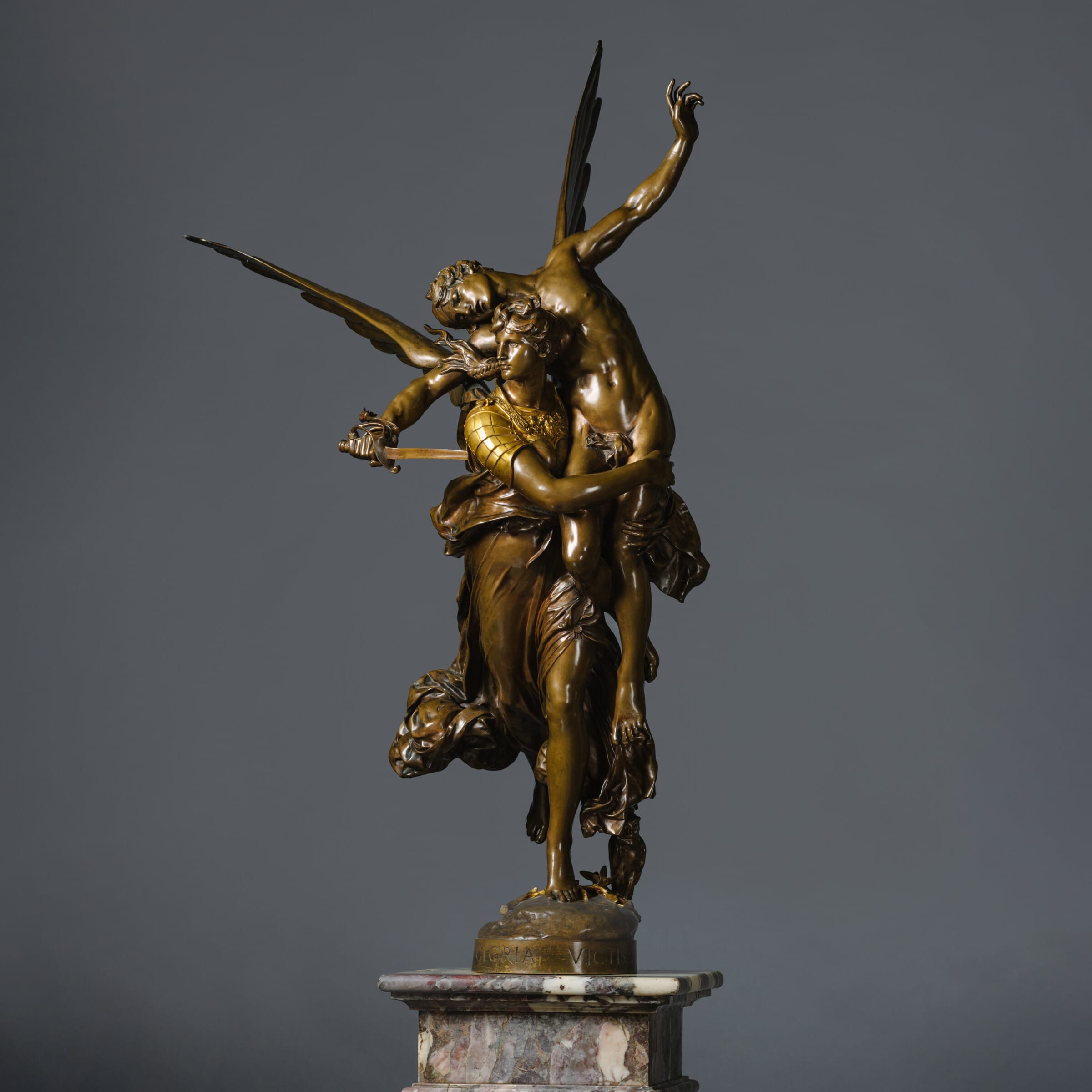
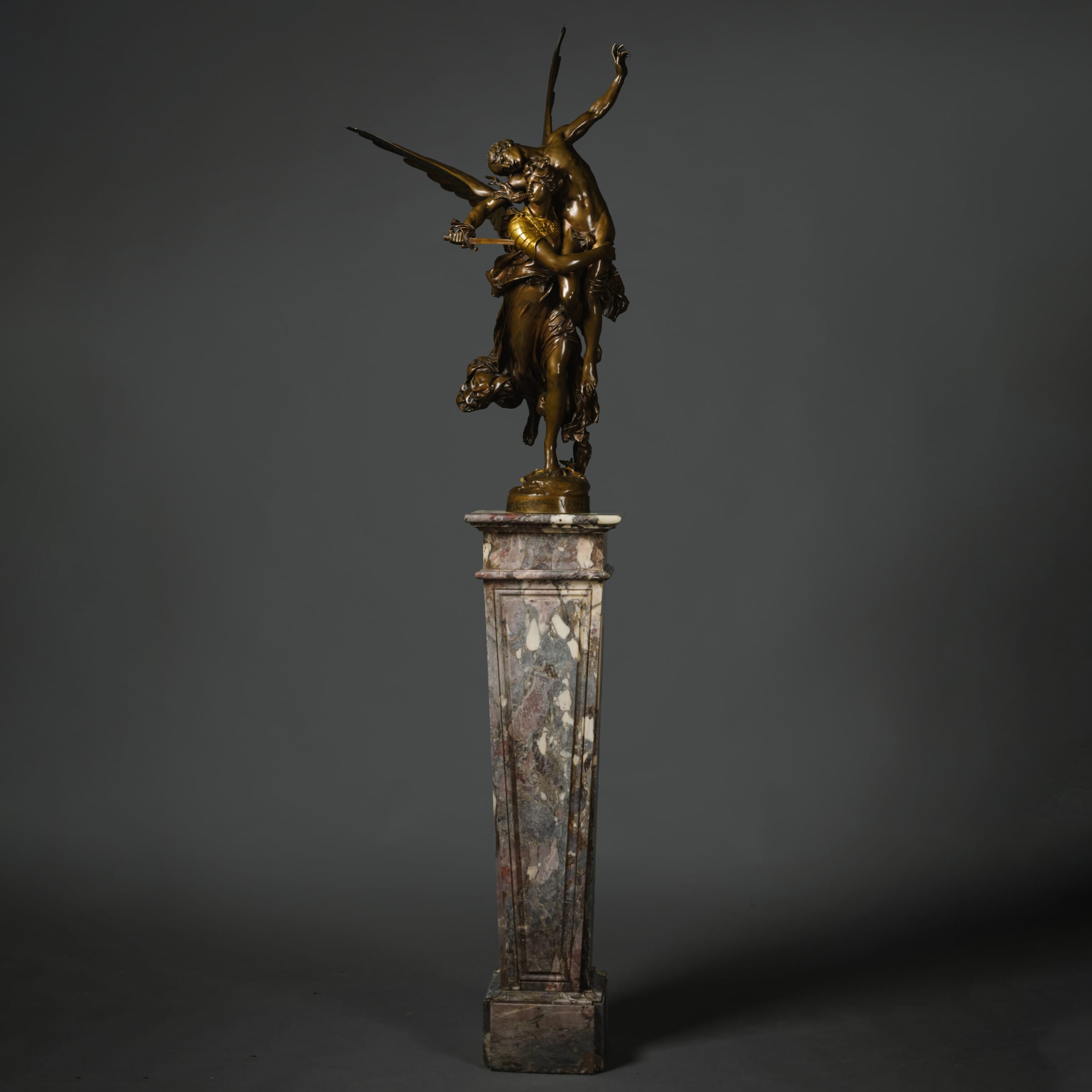
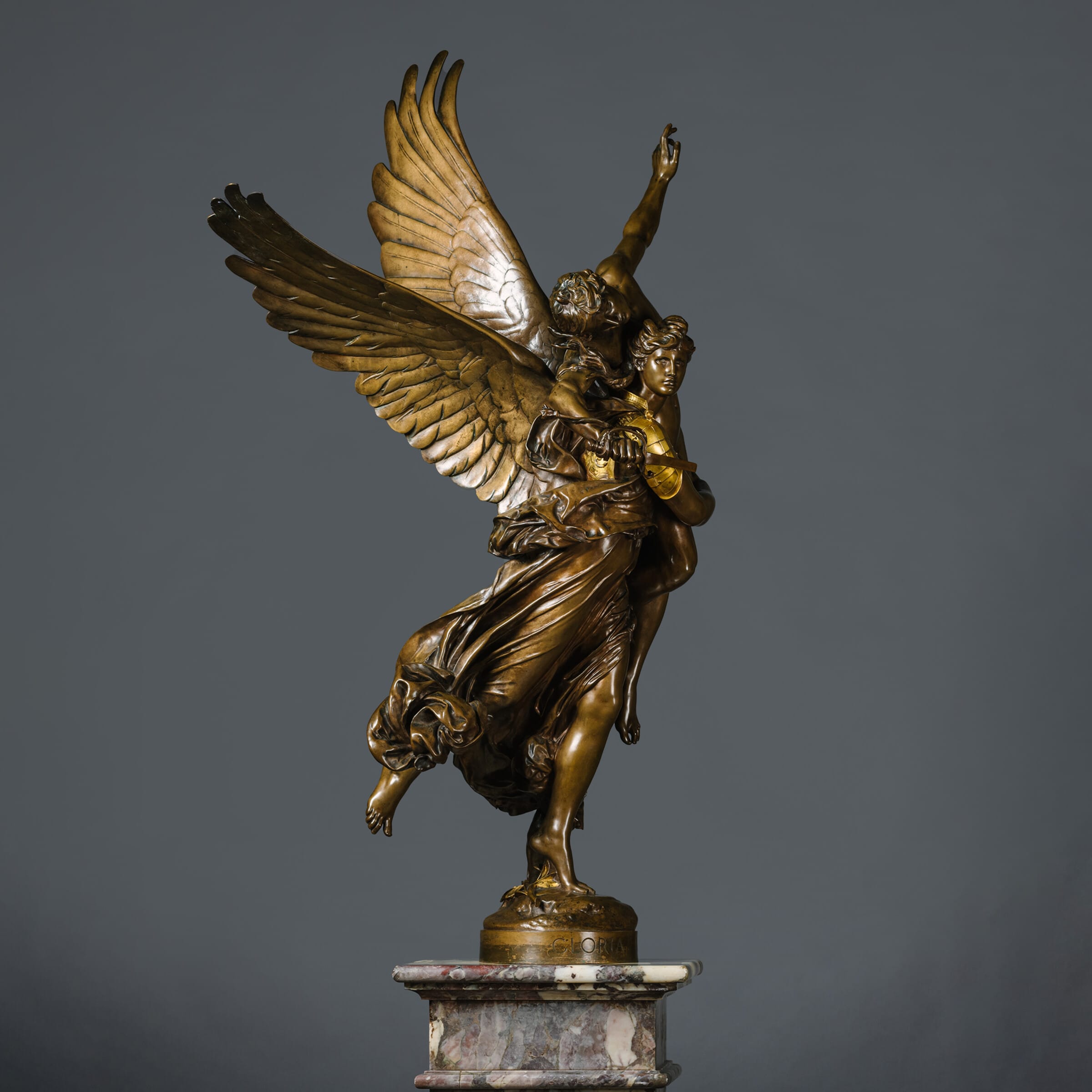
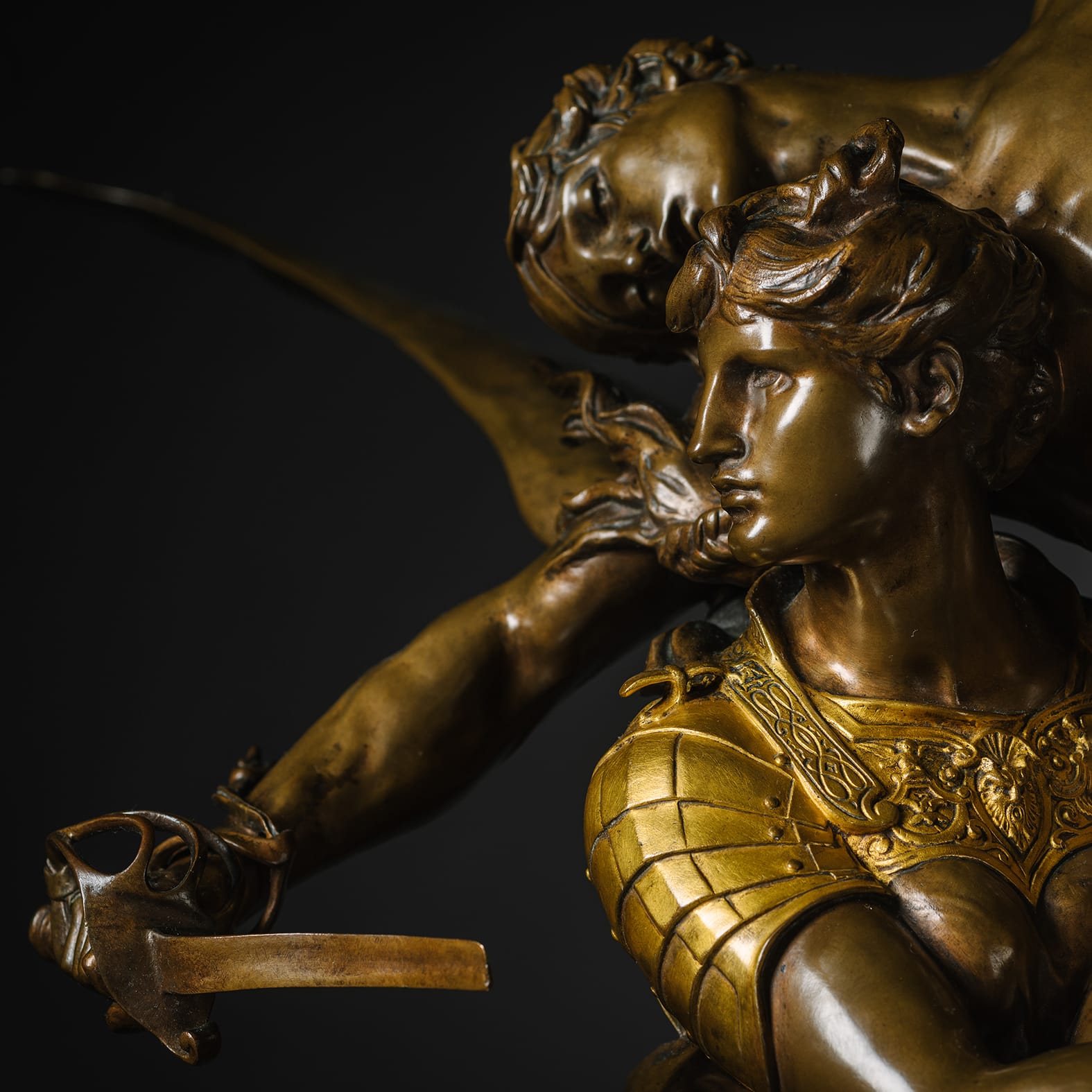
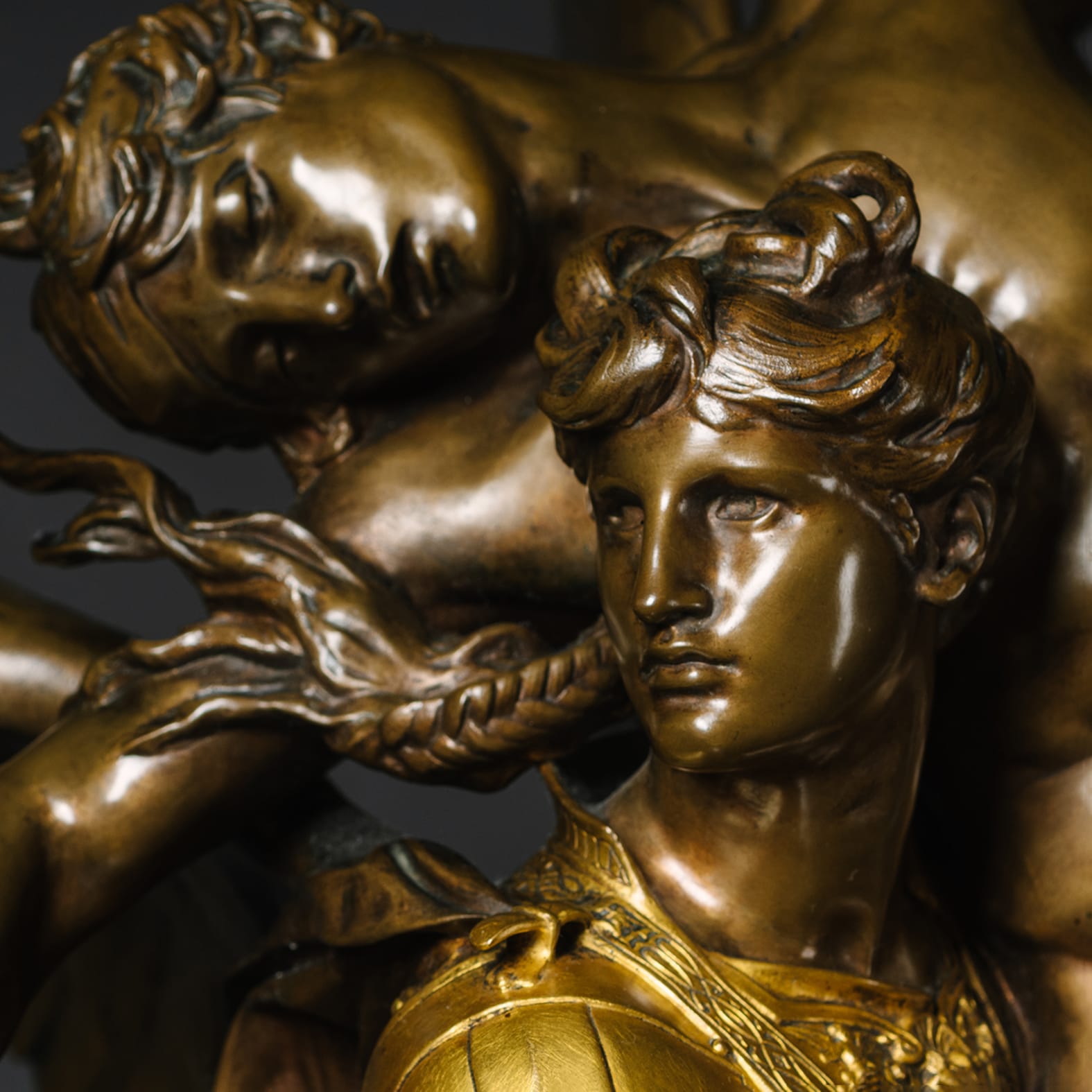
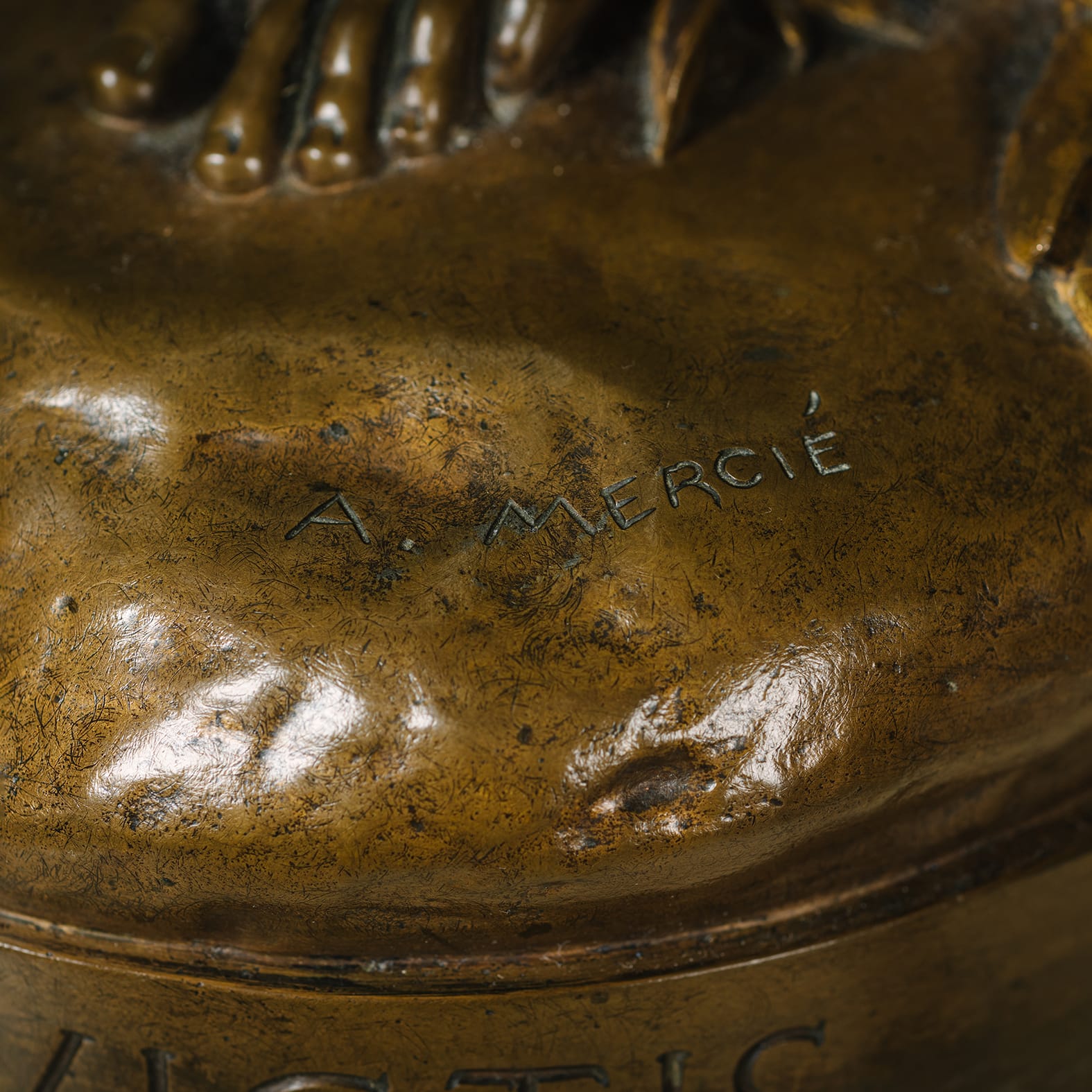
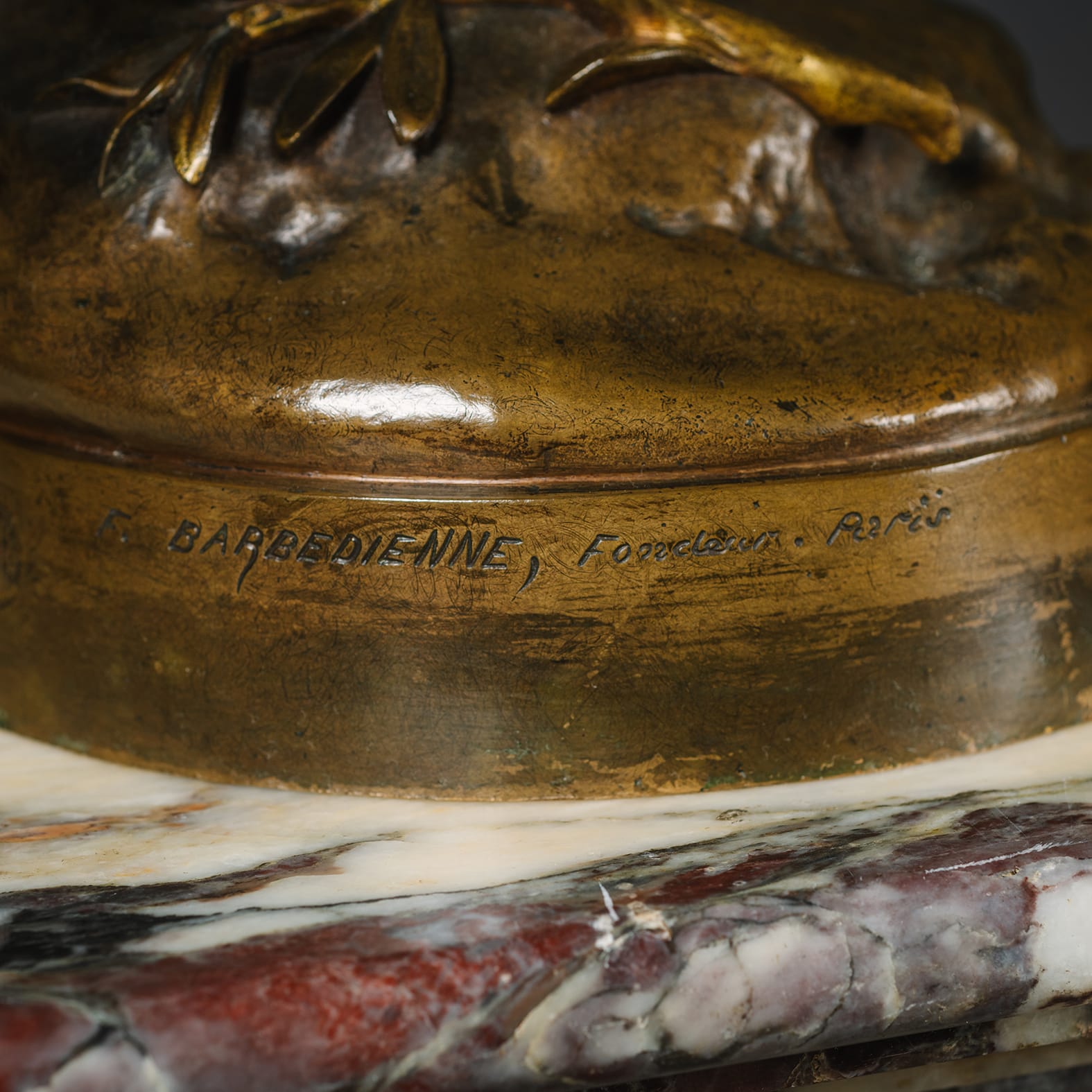
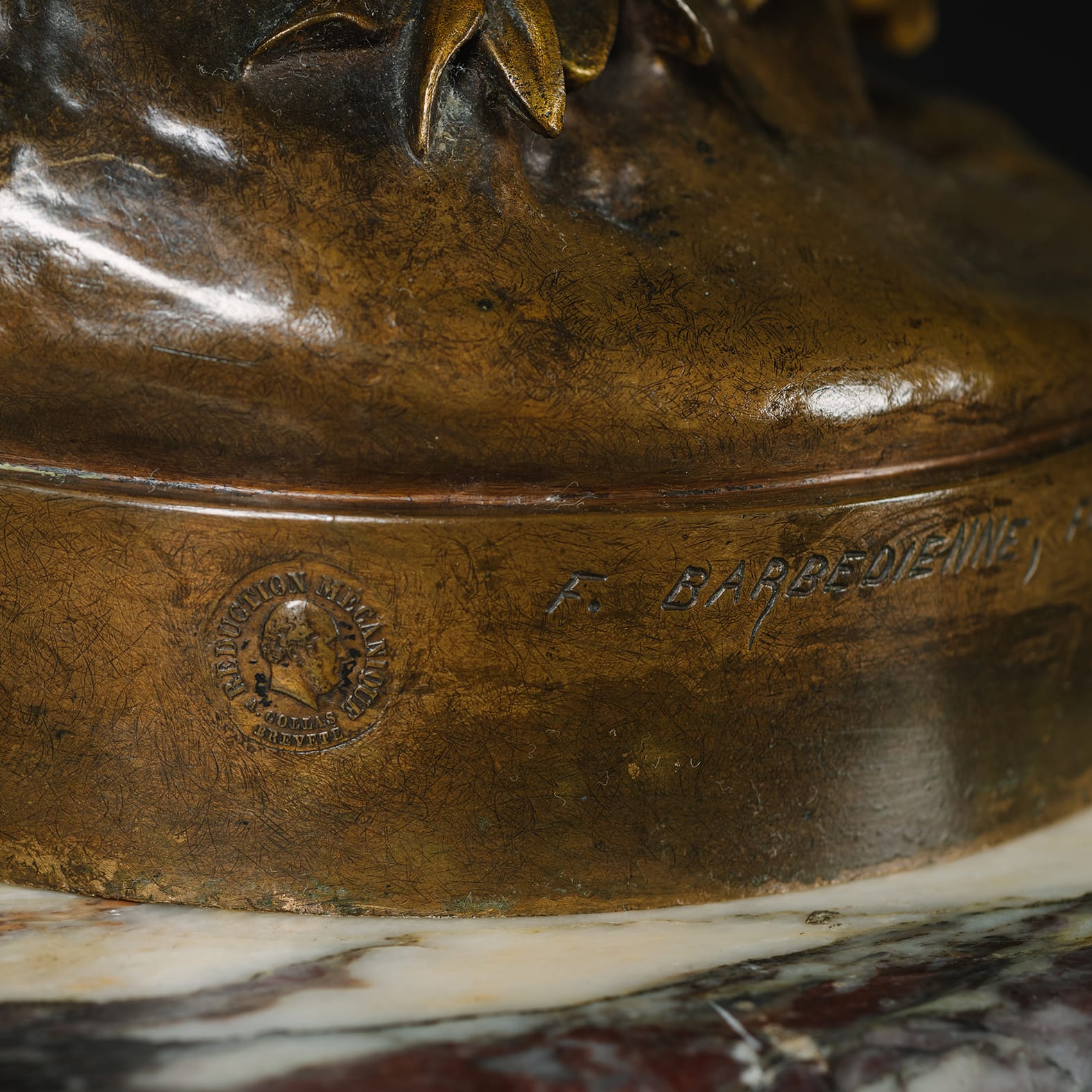
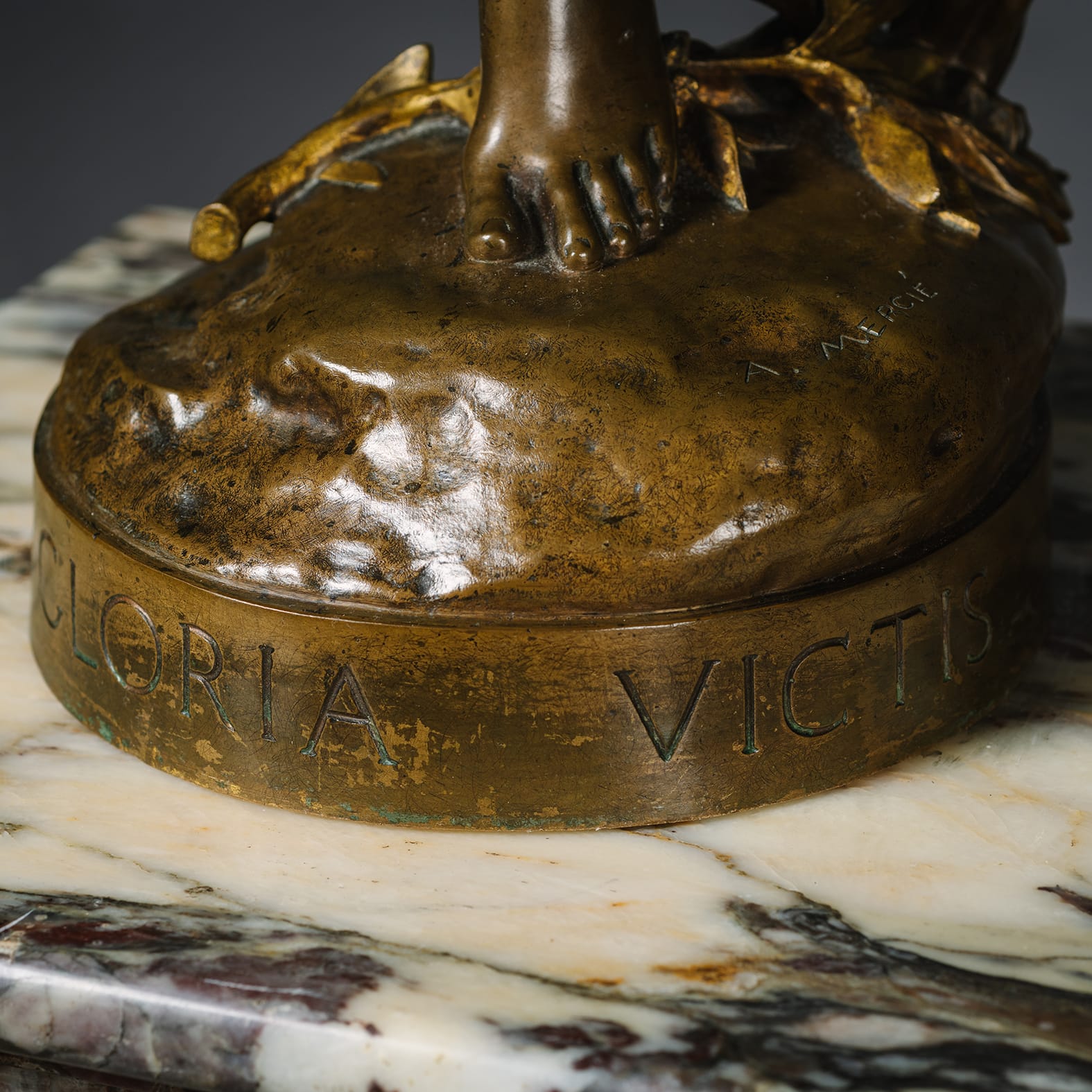

 Imprimir
Imprimir